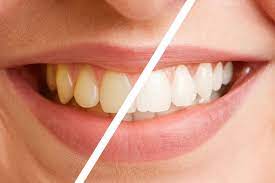One of the most common cosmetic dental questions today is, “Is Zoom teeth whitening safe for your teeth and gums?” With so many people turning to professional whitening for brighter, more confident smiles, safety is a top concern. Zoom whitening is a well-known in-office treatment that uses light-activated technology and a powerful gel to remove deep stains and discoloration. But many still wonder if it’s harsh on enamel or if it irritates the gums. In this guide, we explore how Zoom Teeth Whitening in Dubai works, what makes it different from other methods, and whether it’s truly safe for your oral health.
Why Safety in Teeth Whitening Matters?
Cosmetic treatments should not come at the expense of your health. Choosing the right whitening option can make all the difference between a glowing smile and long-term dental issues. When evaluating if Zoom whitening is safe, it’s important to understand what’s involved in the process.
Here’s why safety is critical in any whitening procedure:
- Your enamel cannot regenerate—once it's worn down, it’s gone for good
- Gum tissue is sensitive and prone to burns or irritation from strong chemicals
- Overuse of whitening products can lead to chronic sensitivity or discoloration
- Long-term oral health depends on maintaining a balanced, non-acidic environment
Unlike DIY whitening kits or harsh bleaching strips, Zoom whitening is performed in a controlled environment and uses a specially formulated hydrogen peroxide gel activated by LED light. This setup ensures minimal exposure to gums and preserves the integrity of your enamel.
Risks Associated With Zoom Whitening:
While generally considered safe, Zoom teeth whitening does come with a few potential side effects. Being informed about these risks allows you to make a better decision and take the right precautions.
Common Risks Include:
- Tooth Sensitivity
- A temporary reaction caused by the peroxide penetrating the enamel
- Usually lasts for a few hours to a couple of days
- Gum Irritation
- May occur if the whitening gel contacts soft tissue
- Usually mild and resolves quickly
- Uneven Whitening
- If you have fillings, crowns, or veneers, they won’t lighten like natural teeth
- This may lead to color mismatches if not accounted for beforehand
How to Minimize These Risks:
- Use a sensitivity-reducing toothpaste before and after treatment
- Avoid extremely hot or cold foods for 24–48 hours
- Follow all aftercare instructions carefully
- Ensure your teeth and gums are healthy before undergoing whitening
Understanding and managing these risks helps make your experience with Zoom teeth whitening safer and more comfortable.
Benefits That Make Zoom a Safe Whitening Option:
Now that you know the risks, let’s highlight why Zoom Teeth Whitening is still considered one of the safest professional teeth whitening methods available today.
Top Safety Benefits of Zoom Whitening:
- Controlled Environment
- Applied by trained professionals with gum barriers and precise gel application
- Customizable Treatment
- Whitening sessions can be tailored to your tooth sensitivity level
- Advanced Gel Formula
- Contains ingredients that reduce irritation and protect enamel
- Faster Results Mean Less Exposure
- Most treatments take under 60 minutes, reducing the duration your teeth are exposed to whitening agents
- Minimal Long-Term Impact
- With proper use, Zoom does not erode enamel or damage gums
Many people find the benefits of Zoom whitening outweigh the temporary side effects. When done correctly, the treatment provides a radiant smile with little to no long-term risk to your teeth or gums.
FAQs: Is Zoom Teeth Whitening Safe?
Is Zoom whitening safe for sensitive teeth?
Yes, but mild to moderate sensitivity is a common side effect. Using a desensitizing toothpaste beforehand can help reduce discomfort.
Does Zoom whitening damage tooth enamel?
No. When performed properly, Zoom does not harm enamel. The gel is designed to penetrate stains without weakening the tooth surface.
Is Zoom safe for gums?
Yes, gum protection (such as a barrier or retractor) is used during the procedure to prevent direct contact with the whitening gel.
How often can I get Zoom whitening?
Most people only need it once every 12 to 24 months, depending on their lifestyle. Overuse of any whitening treatment may lead to sensitivity.
Can Zoom be done on teeth with fillings or crowns?
Zoom will not change the color of restorations, so it’s best to discuss this beforehand. Natural teeth will whiten, but crowns and fillings won’t.
How do I care for my teeth after Zoom whitening?
Avoid dark-colored beverages (like coffee or wine) for at least 48 hours, and continue brushing with a non-abrasive toothpaste.
These common concerns highlight the importance of knowing how Zoom teeth whitening works and how to prepare for the best, safest results.
Conclusion:
To sum it up, Zoom teeth whitening is safe for your teeth and gums when performed correctly and under the right conditions. Its advanced gel formula, controlled application, and protective measures help reduce side effects and preserve your oral health. While you might experience some temporary sensitivity or gum irritation, these effects are usually short-lived and manageable. So, if you're still wondering, “Is Zoom teeth whitening safe for your teeth and gums?”, the answer is yes—when done responsibly, it’s one of the most effective and low-risk options to achieve a visibly brighter smile without compromising dental wellness.





Comments